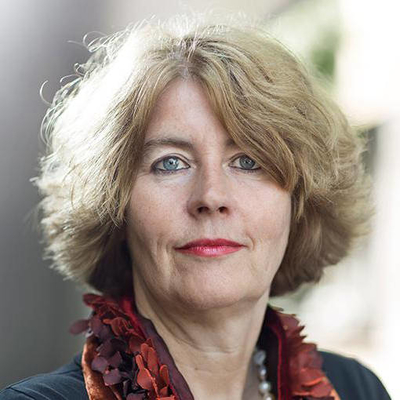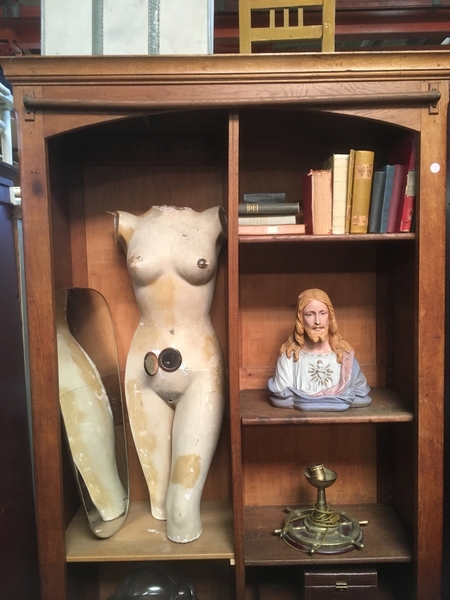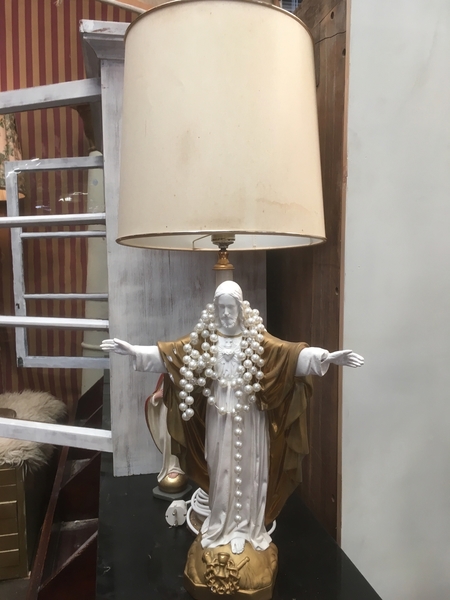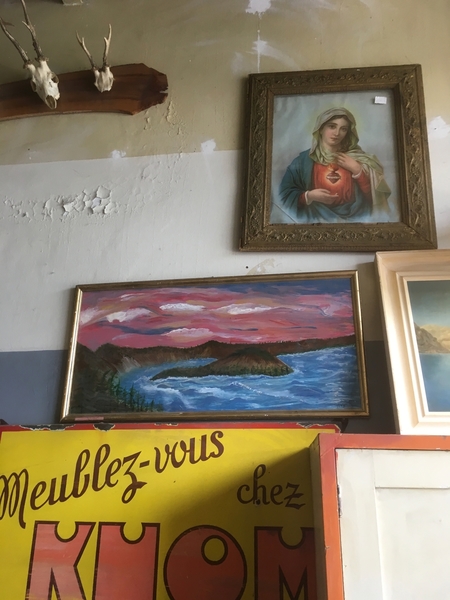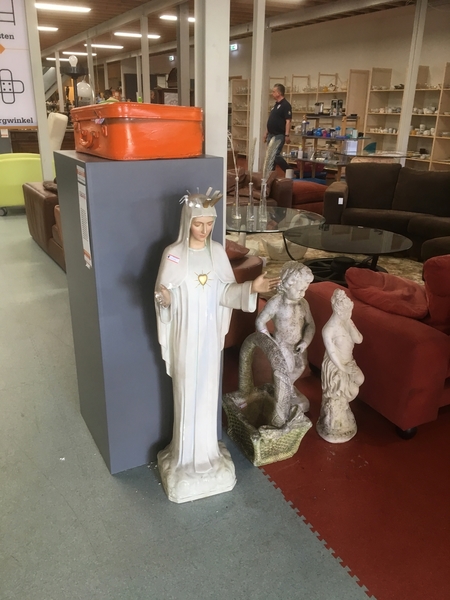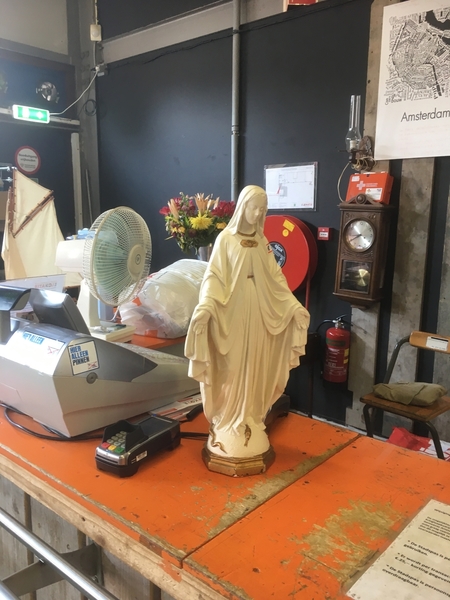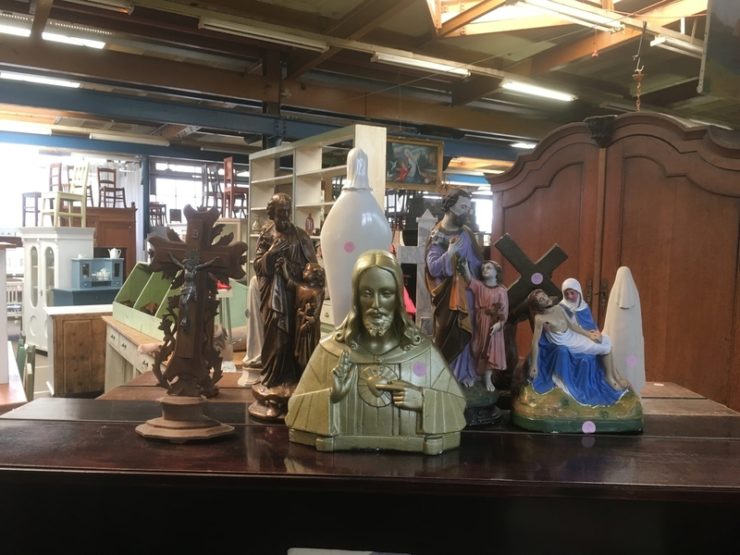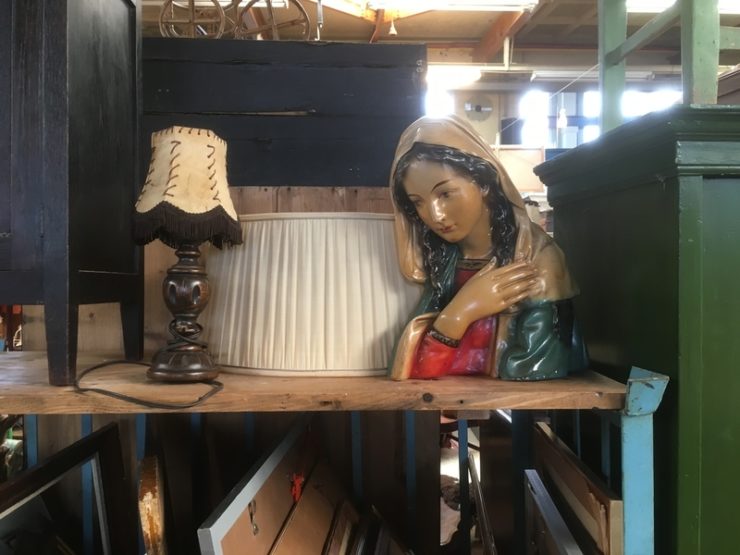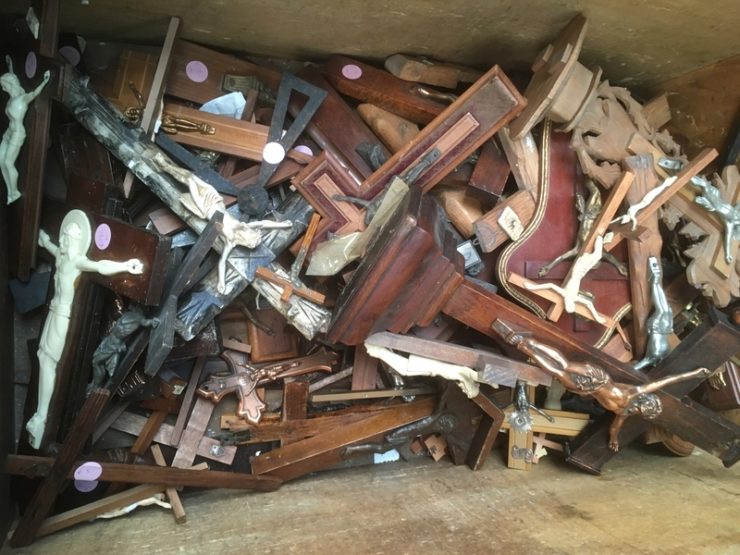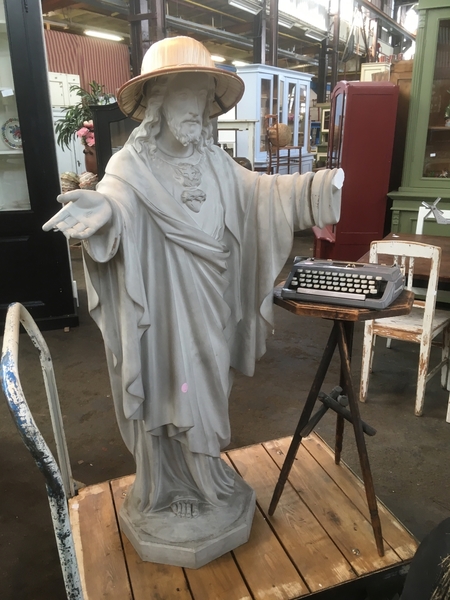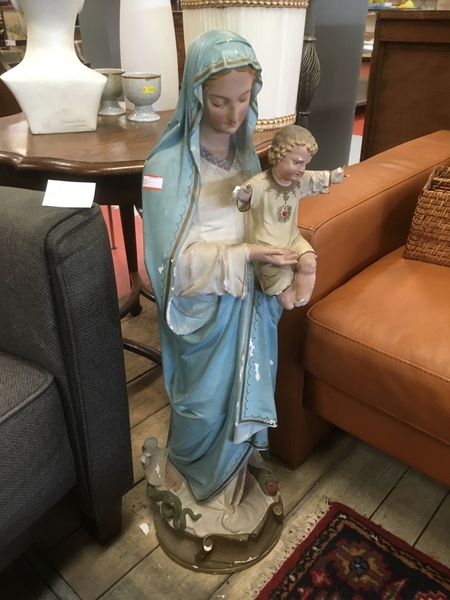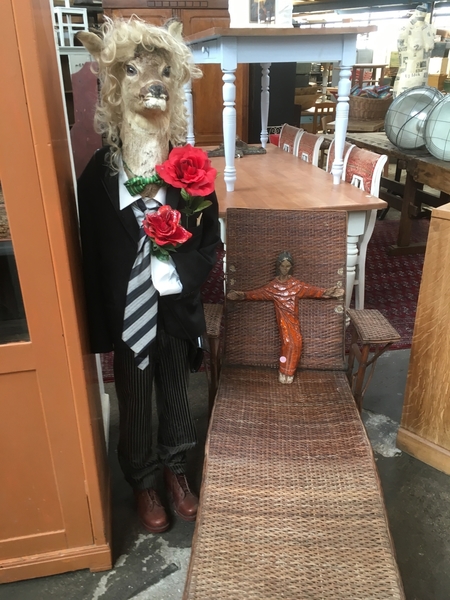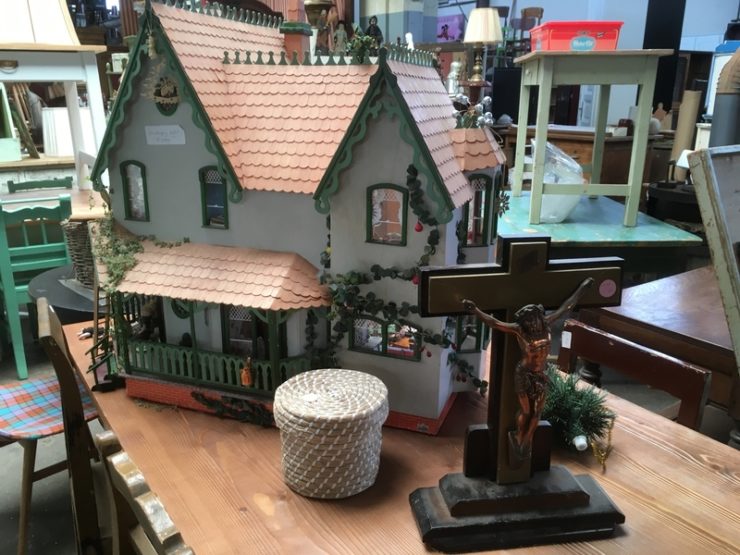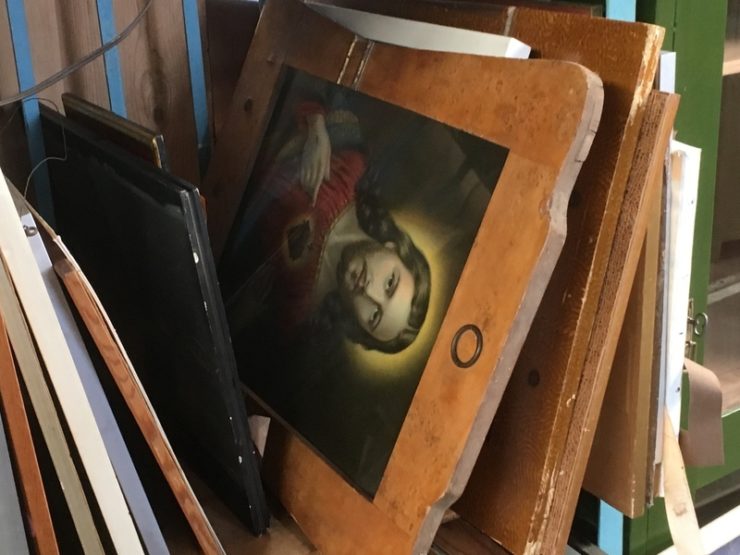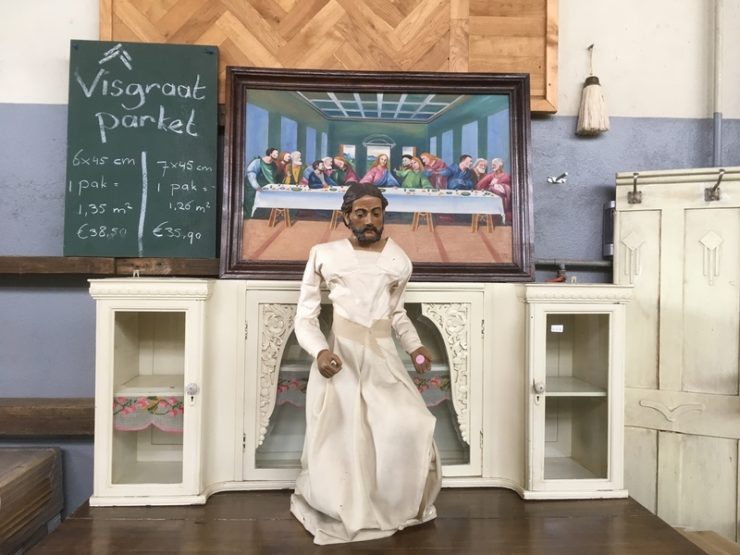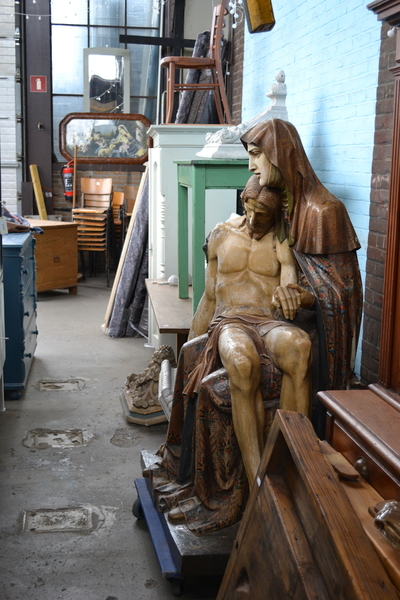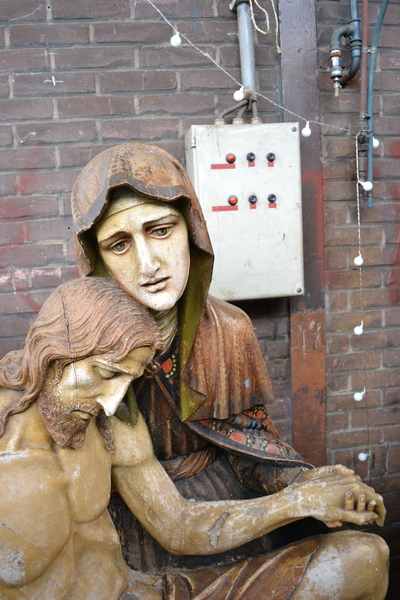By Birgit Meyer
The steady decline in church membership and attendance in mainstream churches is not an abstract process, even through its dominant representation via statistics may suggest this. Decline becomes tangible via concrete forms and practices. People’s increasing distance from the Christian faith as it was lived by previous generations yields many material traces. Of course, Christianity – both Catholic and Protestant- has always materialized through buildings, images, objects, statues, and so on, even though this was not a central focus in scholarly research. As such longstanding Christian worlds are breaking up, buildings are up for new uses (see the research by Daan Beekers and Elza Kuyk), and all kinds of sacred and profane objects are put adrift and float into new settings, into other churches and museums as well as into the ateliers of artists.
Concomitantly, people clear their private attics and cellars, or the houses of their grandparents and parents. In so doing, they get rid of pious stuff, such as prints of the Sacred Heart of Jesus or of Mary, statues and busts of the Madonna, Crucifixes and so on. This is not a question of a determined iconoclasm fuelled by contempt and anger. People just want to clear such things from their homes. Many may feel a bit uncomfortable about simply trashing grandmother’s Sacred Heart of Jesus, or the statue of Our Lady mother kept in the bedroom. For them, to evoke Irene Stengs’ felicitous notion, these things may be ‘sacred waste’ that cannot simply be thrown into the dustbin. As non-believers and non-practitioners, people may no longer have a use for these, at times unwieldy and eye-catching, things. The petty, everyday devotional and pious practices in which such religious matters were enveloped have evaporated for them. So people put these things on the move, making them available for new buyers.
Bygone are the days in which these items were part of cherished ‘sensational forms’, through which their users sought to draw near to God. Placed among second hand items in messy arrangements, they become religious matters out of place (Mary Douglas). Situated in new environments made up of a broad mix of items that all await new users, these traces of a Christian past do not go unnoticed. Their former special, or even sacred, status is still remembered by many beholders. This makes the new arrangements intriguing, puzzling, and perhaps unsettling, or even potentially sacrilegious or blasphemic. The presence of formerly special or sacred items in such new environments occurs through intriguing assemblages of laid-off things, from which many questions arise.
The photos in this gallery were taken by Jojada Verrips over the past months in various second-hand locations in Amsterdam North. Hunting for books, his eyes were caught by surprising and somewhat surreal arrangements of items derived from Catholicism. Trying to find out about the provenance of these items, he learned that some derived from a closed down monastery in Belgium. The saleswomen spoke about and handled them with great respect. Others may come from people’s homes. His photographs invite questions about the multiple ways in which the Christian past is present in such assemblages. What might have been the biographies of all these things, the trajectories through which they passed? How were they approached, used and touched during the heydays of their devotional use? How much pleasure and sorrow has been vested in them? How many prayers were addressed to them? How do items loose their holiness? And how will future owners of the mass of crosses and crucifixes placed in a container differ from their previous users? What to make of the – accidental? – proximity of a prosaic item as a lamp and a bust of Mary or a statue of Jesus, adorned with plastic pearls? Does the lamp profanize the bust and the statue, or do the latter somehow retain what Daan Beekers calls a ‘sacred residue’ against all odds? Who arranged a cupboard so as to display a naked female doll’s torso, a mirror, some books, remains of a lamp and a bust of the Sacred Heart of Jesus? Could we see this as an informal, largely unintended piece of surreal art that makes us wonder about so far unconceivable or hidden relations between all the elements? What to make of the crucifix placed in front of a doll’s house – marked as ‘not for sale yet’? And of a Jesus figure with a tropical helmet? Why might one somehow be moved by the sight of a Pietà, placed in front of an electricity box? Such and many more questions come to mind, asking us to probe into the presence and afterlife of a Christian, Catholic past in current times, about the relation between art and religion, about the extension of sacrality into the prosaic setting of a second-hand store, about the future of such abandoned forms in variable assemblages, and much more.
Pictures are all made by Jojada Verrips. Copyright Jojada Verrips.


